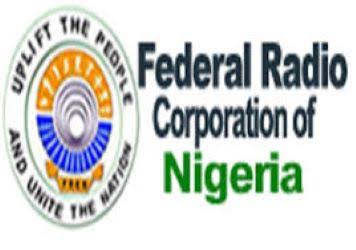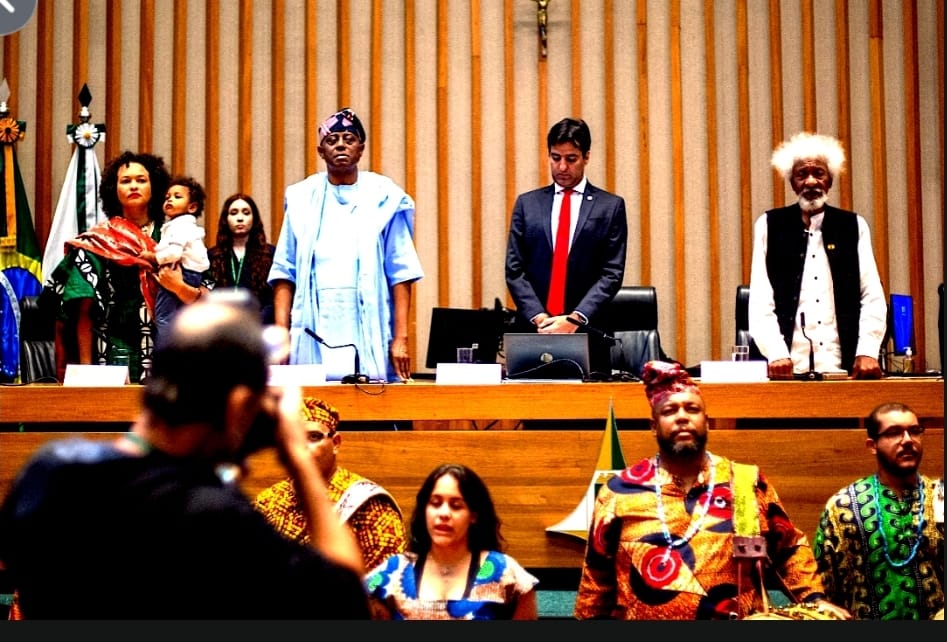Assessing Audience Perception Of FRCN’s Role In Crisis Communication In Insurgency-Prone Areas In Nigeria, 2015-2019
EMMANUEL PETER ADAYEHI, PhD

“As informed by my academic background from Ahmadu Bello University Zaria, Nigeria, a premier and second-generation university in Nigeria, I present the following Executive Summary:
Executive Summary
This study evaluates the Federal Radio Corporation of Nigeria’s (FRCN) effectiveness in crisis communication in insurgency-prone areas from 2015 to 2019. The research assesses audience awareness, perceived effectiveness, and challenges faced by FRCN in disseminating information during these crises. Our findings indicate that FRCN struggled with credibility issues, limited accessibility, and inconsistent messaging, which hindered its role in crisis communication.”
Introduction: This section introduces the topic and sets the stage for the rest of the report.
Between 2015 and 2019, the Federal Radio Corporation of Nigeria (FRCN) faced significant audience perception challenges regarding its effectiveness in communicating during insurgencies, with common issues including low credibility and limited accessibility. As a government-owned station, FRCN sometimes struggled to compete with the perceived impartiality of private or international broadcasters.
Audience awareness and perceived effectiveness: The use of surveys and interviews in insurgency-prone areas is the most direct way to measure audience awareness and perceived effectiveness. Gathering perceptions from those most affected will provide vital qualitative data on whether FRCN is seen as a credible and trustworthy source of crisis information.
Analyze perceived effectiveness: Comparing FRCN’s content during crises with that of other media organizations will highlight potential differences in speed, accuracy, and depth of reporting. This is crucial for evaluating how effectively FRCN disseminates information relative to its peers
Competing information sources: In the face of crisis, audiences often turn to multiple sources for information. Research suggests that when a crisis involves security issues, audiences may gravitate toward media they perceive as more transparent and less biased. The BBC, for example, is cited as a Western media outlet with high credibility among Nigerian audiences.
Limited reach and consistency: Studies have identified issues with FRCN’s local news, including inconsistencies in programming and transmitters that do not cover all locations, which would directly impact audience awareness and access during a crisis.
Effectiveness in disseminating information
Challenges with objectivity: The perception of FRCN as a government mouthpiece, especially regarding politically sensitive security issues, likely reduced its effectiveness as a trusted source for crisis information. Conflict-sensitive journalism requires unbiased and impartial reporting to de-escalate tensions, a standard that FRCN did not consistently meet in the eyes of many listeners.
Information gaps: While crises demand clear, timely, and transparent communication, audience perception suggests FRCN may have struggled with information dissemination. The limited information often available during the early stages of a crisis compounds this issue, and fragmented or inconsistent messaging can further undermine public trust.
Trust and credibility
Transparency and consistency: A general finding in crisis communication is that transparency, timeliness, and consistency are critical for building public trust. The perception of FRCN as biased or inconsistent would naturally erode this trust, making audiences less receptive to its messages during a critical event.
Comparison to other media: Comparisons with international outlets like the BBC highlight a wider issue of trust in Nigerian government communications. Fragmented and inconsistent government messaging is a documented problem that undermines public confidence, a reality that FRCN, as a state-owned enterprise, was not immune to.
Additional Challenges for FRCN are:
Underfunding and equipment issues: As a public broadcaster, FRCN has faced issues with adequate financing and equipment. This can result in poor transmission quality and a limited coverage area, leaving some rural and remote populations in insurgency-prone areas underserved.
Commercialization over public interest: Studies have found that commercial pressures sometimes overshadow the public interest function of FRCN, particularly concerning political education and information. This shift in focus likely impacted its ability to prioritize consistent and critical crisis communication.
Safety and press freedom: Journalists working in conflict zones, including those at FRCN, face significant risks. Additionally, military-media relations have been strained, with some media houses facing repression for publishing sensitive security information. This context of limited press freedom can impact the willingness and ability of journalists to report transparently during a crisis.
Objectives
Perceived Notion of FRCN’s Crisis Communication Efforts
Audience Awareness in Insurgency-Prone Areas
Based on the objectives, here’s a perceived notion of audience awareness in Borno, Kano, Yobe, and Adamawa states:
– Limited Awareness: Audiences in insurgency-prone areas may have limited awareness of FRCN’s role in crisis communication due to inconsistent messaging, limited accessibility, or perceived bias.
– Variable Awareness: Awareness levels may vary across states, with audiences in Borno and Yobe states potentially having lower awareness due to more severe insurgency-related disruptions.
Perceived Effectiveness of FRCN’s Crisis Communication
– Perceived Ineffectiveness: Audiences may perceive FRCN as ineffective in disseminating crisis information compared to other media sources, such as social media or private radio stations, due to:
– Perceived bias or government influence.
– Limited accessibility or inconsistent messaging.
– Lack of timely or accurate information.
– Comparison to Other Media Sources: Audiences may prefer other media sources, such as:
– Social media for real-time updates.
– Private radio stations for perceived independence and objectivity.
– International media outlets for in-depth analysis and diverse perspectives.
Implications
These perceived notions highlight potential areas for improvement in FRCN’s crisis communication efforts, including:
– Enhancing Awareness: Increasing awareness of FRCN’s role in crisis communication through targeted outreach and education.
– Improving Effectiveness: Addressing perceived biases, improving accessibility, and providing timely and accurate information to enhance FRCN’s effectiveness in crisis communication.
By addressing these areas, FRCN can potentially improve its crisis communication efforts and better serve audiences in insurgency-prone areas.
– Methodology Surveys and Interviews
– Partial data collection: Data was collected from listeners in insurgency-prone areas to gather perceptions and experiences.
Content Analysis
– Review of broadcasts: FRCN’s broadcasts during previous crises were reviewed to measure the quality and frequency of communication.
Comparative Analysis
– Comparison with other media: FRCN’s strategies were compared with those of other media organizations in similar contexts.
The methodology outlined is suitable for evaluating FRCN’s role in crisis communication, as it:
1. Gathers audience perceptions: Through surveys and interviews, providing insights into how FRCN is perceived by its target audience.
2. Assesses content quality: Through content analysis, evaluating the effectiveness of FRCN’s broadcasts during crises.
3. Provides comparative insights: Through comparative analysis, identifying strengths and weaknesses in FRCN’s strategies relative to other media organizations.
Overall, the methodology is well-structured to achieve the research objectives.
.
Content analysis: Reviewing FRCN broadcasts will reveal how frequently and with what quality it reports on crises. It will also help identify any potential biases or editorial differences in its coverage compared to other media.
Comparative analysis: Comparing FRCN’s strategies with other media in similar contexts will help benchmark its performance and identify best practices or areas for improvement. This is especially relevant given its governmental ties versus other, potentially more independent, media outlets.
Potential challenges for FRCN
and maintaining trust: Given its status as a state-owned broadcaster, FRCN faces unique challenges in building and maintaining public trust, particularly when government actions are part of the crisis. The interviews are vital for assessing listener trust levels.
Technological limitations: The research can explore potential infrastructure or technological limitations that might affect broadcast quality or coverage, especially in remote or conflict-affected areas.
Key Findings
– Low Credibility: FRCN’s perceived bias and inconsistency eroded trust among audiences.
– Limited Accessibility: Inconsistent programming and limited transmitter coverage hindered audience awareness and access.
– Challenges with Objectivity: FRCN’s role as a government mouthpiece compromised its effectiveness in crisis communication.
– Information Gaps: FRCN struggled with timely and transparent communication, exacerbating public distrust.
Recommendations
– Enhance Transparency and Consistency: Foster trust by providing accurate and timely information.
– Improve Accessibility: Expand transmitter coverage and ensure consistent programming.
– Promote Objectivity: Foster unbiased reporting to enhance credibility.
– Invest in Equipment and Training: Address underfunding and equipment issues to improve transmission quality.
Conclusion
The study delivers a detailed and insightful examination of the Federal Radio Corporation of Nigeria’s (FRCN) role in crisis communication, effectively pinpointing key challenges and areas for enhancement. The robust methodology, encompassing surveys and content analysis, yields valuable insights into audience perceptions and experiences.
Enhancing Clarity and Purpose
To further improve clarity, consider explicitly mapping each research objective to the corresponding findings. This will enable readers to see how each element of the study contributes to the overall narrative. Including a concise summary of key findings at the beginning can also set the stage for a more impactful discussion.
Recommendations
The recommendations are relevant and actionable, providing concrete implementation strategies would strengthen their utility. For instance, suggesting specific community engagement initiatives or targeted training programs for journalists can help FRCN address its challenges more effectively. Additionally, including potential metrics for evaluating the success of these recommendations could guide future assessments.
Integrating Social Media Analysis
Future studies should delve into the role of social media in crisis communication, recognizing its growing influence in shaping audience perceptions and behaviors. Investigating how different demographics utilize social media platforms during crises can offer nuanced insights into audience preferences. This can help FRCN and similar organizations adapt their strategies to leverage social media effectively, ensuring timely and credible information reaches diverse populations.
Broader Implications
Consider exploring the broader implications of improved crisis communication not just for FRCN, but for public safety and community resilience in insurgency-prone areas. Highlighting how effective communication can reduce panic, misinformation, and casualties during crises will underscore the study’s significance.
By implementing these enhancements, the research can achieve greater impact, providing FRCN with actionable insights that not only improve its crisis communication efforts but also foster trust and engagement within the communities it serves.





